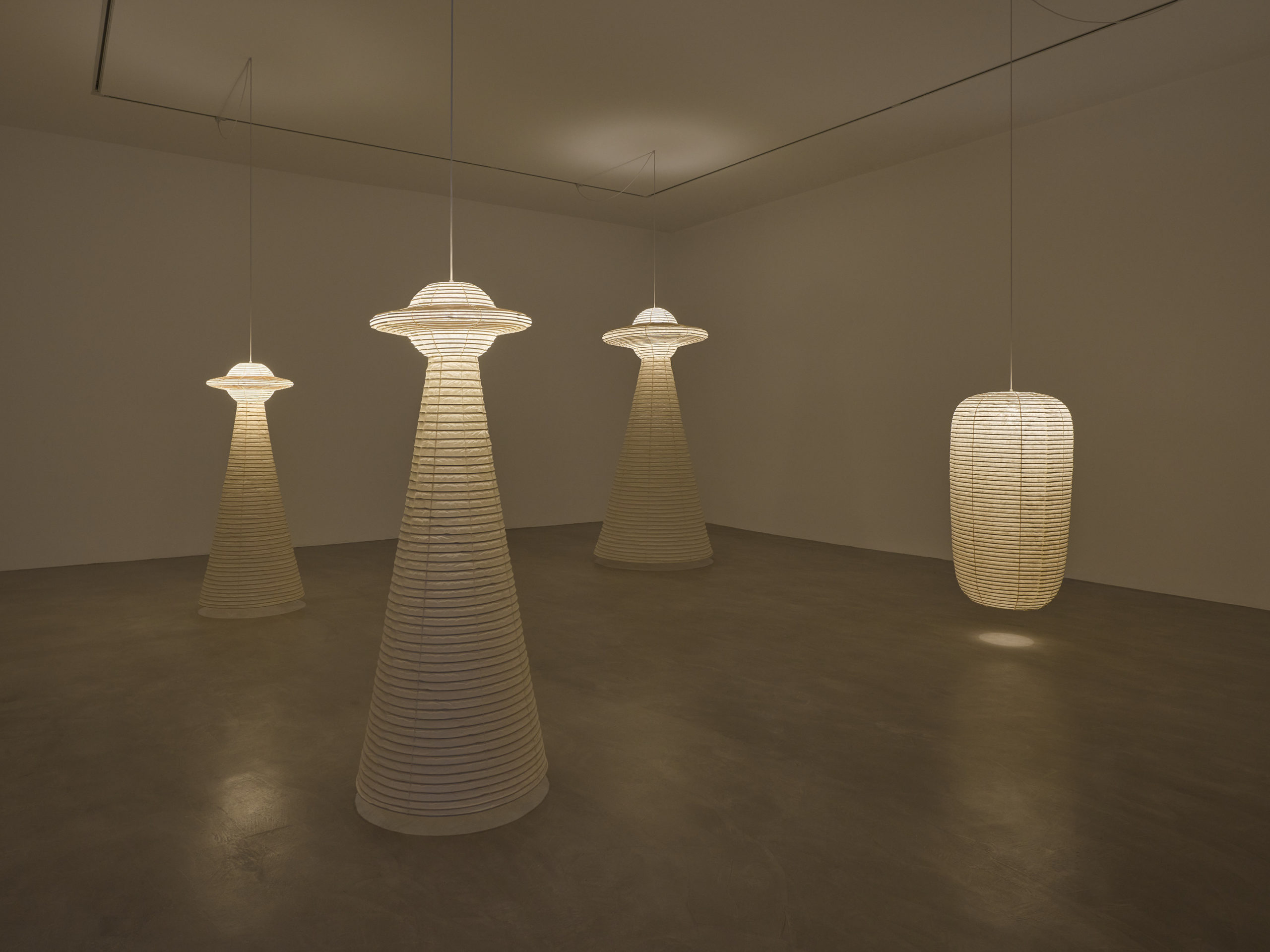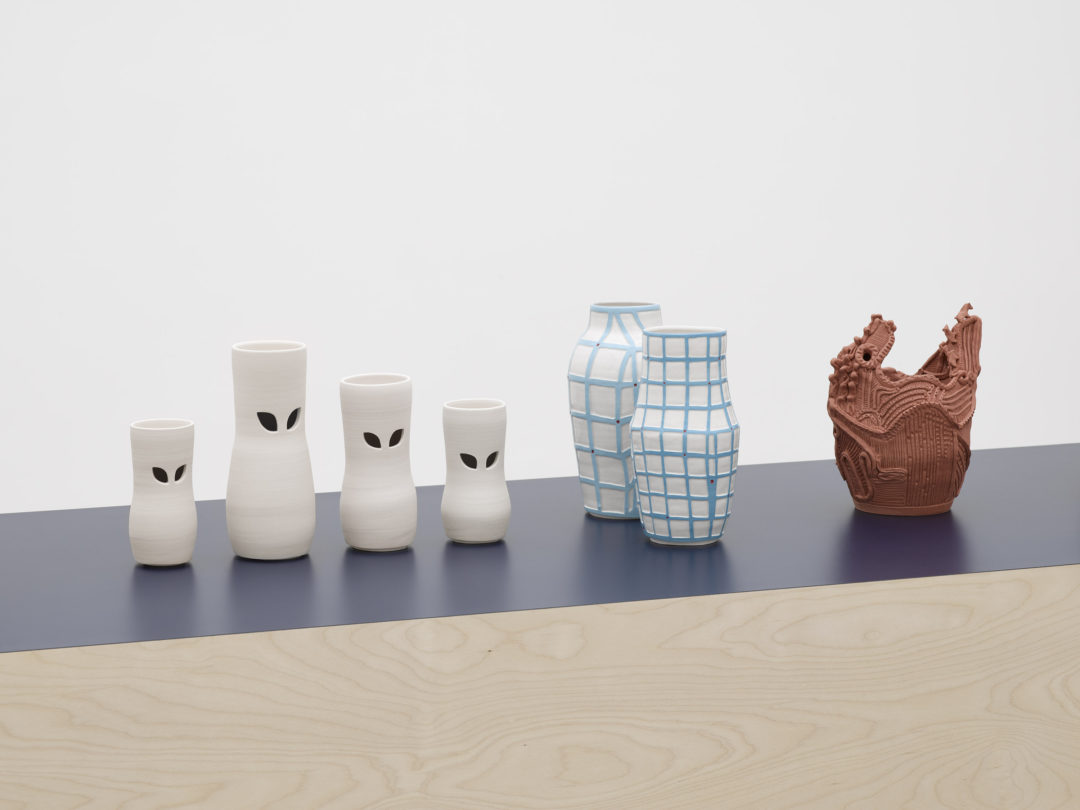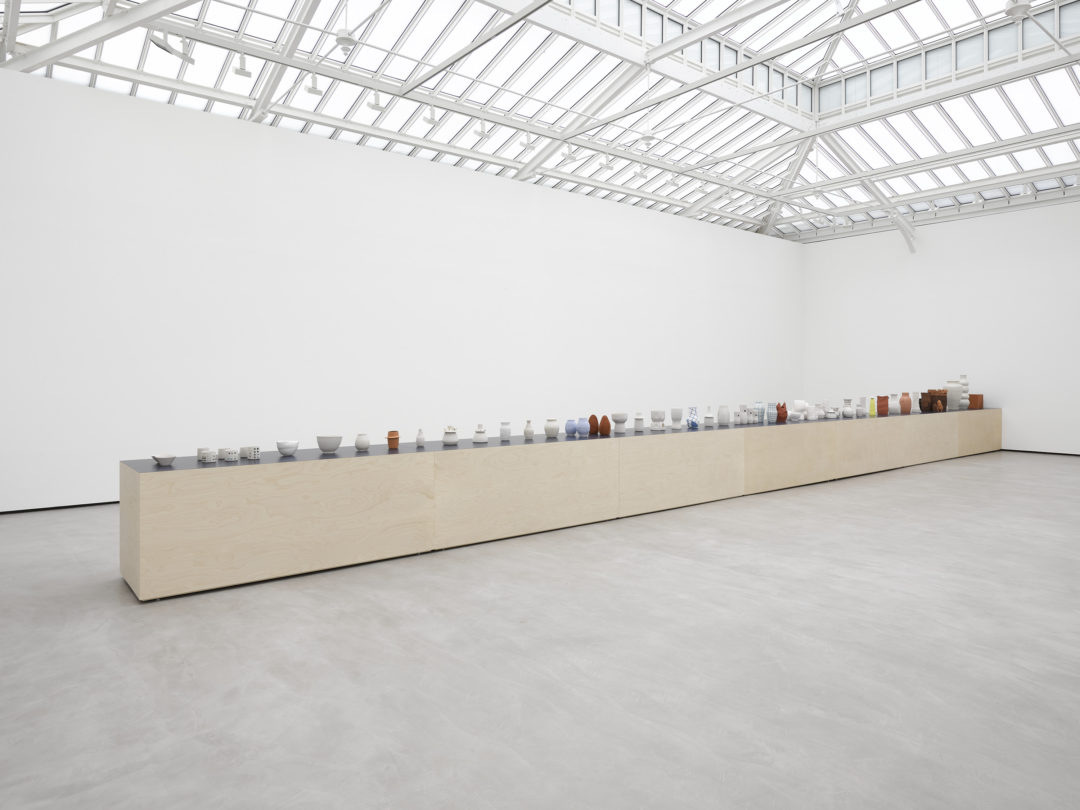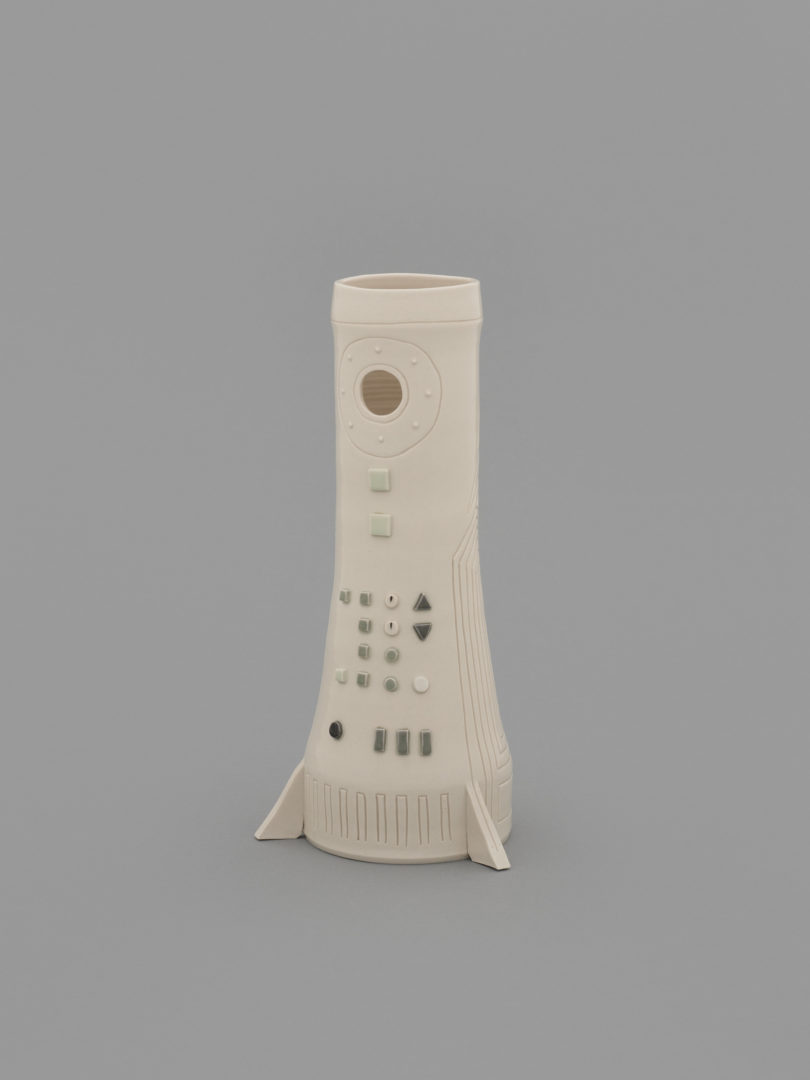Shio Kusaka

Shio Kusaka is a ceramist born in Morioka, Japan, who lives and works in Los Angeles. Her work is internationally recognised, and is held in public collections around the world. However, until now, her creations have never been exhibited in France.
Reservoirs of art and life
Pots, bowls, goblets, vases, cups, carafes, jugs…
Shio Kusaka’s works remind us that these vessels are receptacles for the energies of everyday life, charged with the gestures that created or used them.
‘For me, the shape of the container determines the motifs […] I’m interested in shapes and the way motifs change as a function of shapes. Lines and grids become more organic patterns through shapes. Form is the real creator, not me.
In this study of form, she engages in an assiduous dialogue with different periods in the history of Japanese ceramics. For example, the clay dancers in her ‘ haniwa studies’ (2022) refer to haniwa pottery from the Kofun period.
In the minimalist repetitions of her geometric works, it is the grids of Agnes Martin, the wall drawings of Sol LeWitt and the concentric squares of Josef Albers that are invoked. Kusaka’s delicate works thus incorporate different influences, with a slight mockery of codes and the rigorous categorisation of styles. The serious can become funny, the everyday a subject worthy of importance, the domestic a source of complexity to be examined in all its potentialities.
The careful attention paid to objects in Japanese tea ceremonies, the motifs of boro sewing or seigaiha waves merge with playful subjects such as the textures of fruit, basketballs or flying saucers.
Her work is imbued with the porosities between art and life, as evidenced by her dinosaur series – in which her children’s fascinations are drawn on containers reminiscent of ancient Greek vases – and the mutual influence that, like a contemporary Betty Woodman, she has established with the work of her husband, the painter Jonas Wood.

The David Zwirner Gallery
Since 2020, Shio Kusaka has been represented by David Zwirner Gallery.
The gallery’s Paris site recently reopened its doors to the public after nine months of closure for major renovation work.
The work was carried out simultaneously on two fronts: on the first floor, with the extension of the gallery following the takeover of Renos Xippas’ space, and on the ground floor, with the restoration of the historic Eiffel-style glass roof erected at the end of the 19th century, which preserved the building’s architectural heritage.
The glass roof now illuminates the works on display in this large room, with natural light changing throughout the day.
An exhibition of light
So it’s hardly surprising that, to inaugurate its reopening, the Zwirner gallery has chosen to exhibit the work of Shio Kusaka, who is very sensitive to architectural issues and very attentive to the scenography of her works.
Kusaka has arranged her creations, from the smallest to the largest, on a long, blue-painted plinth that structures and divides the exhibition space, running the length of the gallery. The plinth gives a sense of unity, where a multiplicity of disparate elements are displayed as if they were a single installation.
The linear arrangement of his pieces is a usual practice for the artist, but since the exhibition ‘One Light Year’ at the Zwirner gallery in New York in 2022 – where the ceramics were lined up on the floor, on copper plates laid out like a hopscotch – this arrangement has become explicitly linked to the cosmos and to light. For here the straight line does not signify any kind of linear progression in time, but rather indicates the trajectory of the propagation of light.
Light thus becomes an integral part of the installation. Just look at some of the titles of the works: halo, beam, signal… these words refer both to light sources and to elements of science fiction.
Some works are also composed of several pieces. These groupings can be read as cartographies or constellations, something that recalls the measurement of a distance, and at the same time incommensurable distances capable of combining past and present. In this sense, the clays in group spaceline 3 (2024) are exemplary: alongside a stylised rocket and a vessel in the shape of a spaceship are studies of pottery from the Jōmon period, with motifs painted in red on a black background, a clear reference to ancient Greek ceramics.
These crossovers between different temporalities and distant cultures hark back to quantum field theory, according to which time is neither unique nor linear, because each instant unfolds multiple moments at once, allowing different times to exist simultaneously.
As soon as you enter the exhibition room, faced with this immense pedestal that extends to the opposite wall, you have to make a choice: either go to the right of the pedestal, or go to the left. The device alludes to a well-known postulate of quantum theory: ‘The observer influences the experiment’. The arrangement of each pot, carefully chosen by the artist, is such that, for most of the elements, what is visible on one side is not visible on the other. This gives rise to two different experiences, depending on which side you choose, of discovering the details of the works.
The choice of path also evokes the quantum indeterminacy of the nature of light, which remains the protagonist of this exhibition. Wave or corpuscular? Wavelength or photon? It all depends on where you look.
The wave-particle duality is also evoked by the lines that imitate sound waves and seismological signals in the Machine 5 (2024) ensemble. Other pieces seem to play with this principle of complementarity, such as group 71 (2024) and group 72 (2023). The latter is more akin to sculpture than pottery, as is the porcelain beam 4 (2023), whose shape inspired the artist to produce a new series of works.
For the first time, Kusaka has used a medium other than ceramics, while remaining true to the tradition of Japanese craftsmanship. These are four paper lanterns, made in collaboration with Kojima Shoten.

The exhibition of light takes on a more literal form here, with these luminaires once again demonstrating the artist’s attraction to turning everyday objects into elements conducive to reverie or contemplation.
The paper lamps lend a soft, poetic atmosphere to the gallery’s second room, and serve their purpose as lanterns, illuminating a space that would otherwise remain in shadow. In the form of flying saucers – or observation towers, if we think of Seattle’s Space Needle, where the artist once lived – these lanterns also reveal Shio Kusaka’s interest in bringing the techniques and history of cultural traditions back into the present day.
The title of the work, which has a different form from the others, qubit 1 (2024), refers to the phenomena of superposition in quantum mechanics and to the linear combination of two basic states. Like quantum states, which can have several values at the same time, Shio Kusaka’s works bring together abstract and figurative forms, ancient traditions and futuristic tales, playful and contemplative states of mind, the familiar usefulness of everyday objects and the marvellous uselessness of art objects.

Head image : Vue de l’exposition /Exhibition view Shio Kusaka, David Zwirner, Paris, 05.09 – 05.10.2024, Courtesy the artist and David Zwirner.
- From the issue: 109
- Share: ,
- By the same author: Agnieszka Kurant , Tschabalala Self, Jeanne Vicerial,
Related articles
Iván Argote
by Patrice Joly
Laurent Proux
by Guillaume Lasserre
Diego Bianchi
by Vanessa Morisset

